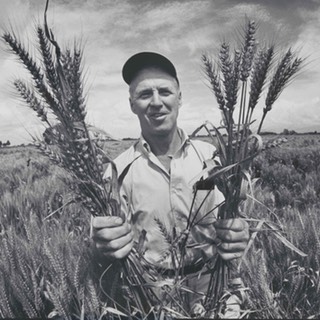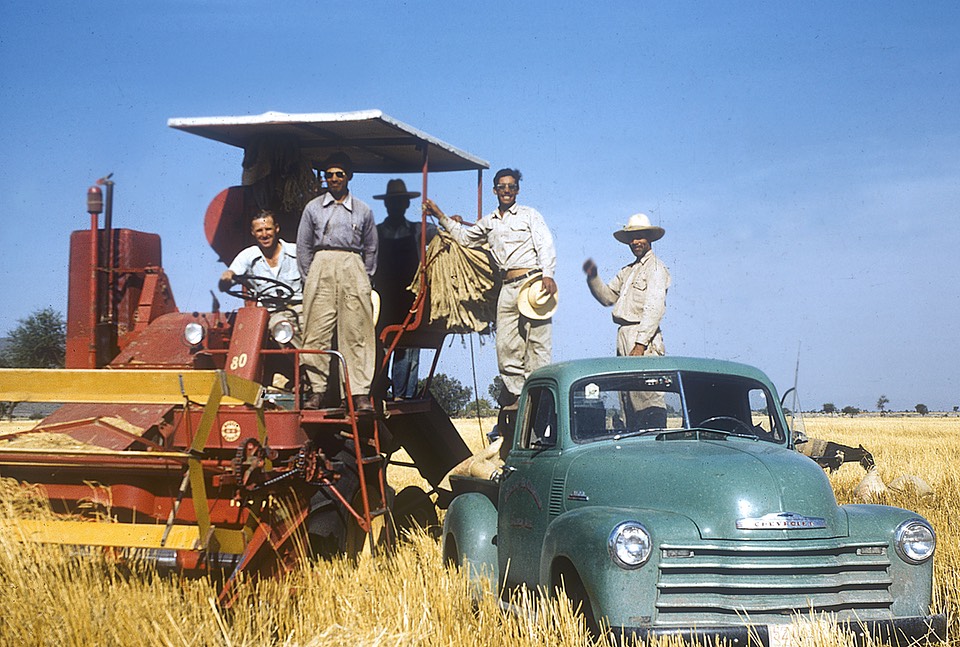
Podcast: Play in new window | Download (Duration: 29:38 — 27.3MB)
Subscribe: Google Podcasts | Spotify | Android | RSS | More
 Norman Borlaug won the Nobel Peace Prize in 1970 for his work as a wheat breeder. The disease-resistant, dwarf wheats that he developed were the foundation of the Green Revolution, banishing global famine and turning India into a food-exporting nation. Many people have hailed Borlaug as a saint, a saviour of humanity. Others have blamed him for everything that is wrong with the modern global food system. The truth, naturally, lies somewhere in between, which is brought out in a new documentary about Borlaug and his work.
Norman Borlaug won the Nobel Peace Prize in 1970 for his work as a wheat breeder. The disease-resistant, dwarf wheats that he developed were the foundation of the Green Revolution, banishing global famine and turning India into a food-exporting nation. Many people have hailed Borlaug as a saint, a saviour of humanity. Others have blamed him for everything that is wrong with the modern global food system. The truth, naturally, lies somewhere in between, which is brought out in a new documentary about Borlaug and his work.
The documentary airs on PBS in the United States next week. I got the chance to see a preview and to talk to Rob Rapley, the writer, director and producer.

As our conversation makes clear, I hope, Borlaug never really imagined he was improving the lot of small subsistence farmers. If he wanted to do that, he would not have been working on wheat. But he was very clear that all he had done was to buy us time. This is what he said in his Nobel Lecture in December 1970:
The green revolution has won a temporary success in man’s war against hunger and deprivation; it has given man a breathing space. If fully implemented, the revolution can provide sufficient food for sustenance during the next three decades. But the frightening power of human reproduction must also be curbed; otherwise the success of the green revolution will be ephemeral only.
He also said “I believe it is far better for mankind to be struggling with new problems caused by abundance rather than with the old problem of famine”.
My fear is that we have done neither. We have not used the time bought us by Borlaug and the Green Revolution wisely, nor have we any idea what to do with the abundance.
Notes
- Rob Rapley’s documentary The Man Who Tried to Feed the World airs on 21 April in the American Experience strand on PBS; Here’s the link for the episode.
- The book Rob Rapley mentions right at the start is Charles Mann’s The Wizard and the Prophet, about Norman Borlaug and William Vogt. Mann appears in the film too.
- I cannot pass up the opportunity to promote an episode I made back in 2016. The True Father of the First Green Revolution is about Nazareno Strampelli, an Italian plant breeder whose work foreshadowed Borlaug’s by 40 years.
- Small b&w photo of Borlaug with semi-dwarf wheats courtesy of National Portrait Gallery, Smithsonian Institution. Photo by Arthur Rickerby
- And, we have a transcript. Sorry for the delay.
- Cover (and main) photo shows Norman Borlaug behind the wheel of a combine harvester with the Mexican field technicians who contributed to seed production in the winter at Ciudad Obregón, Sonora, northern Mexico, c. 1952. Photo credit: CIMMYT.
- Banner photo shows Borlaug in the field at what is now CIMMYT’s CENEB station (Campo Experimental Norman E. Borlaug, or The Norman E. Borlaug Experiment Station), near Ciudad Obregón, Sonora, northern Mexico, in 1961. Note that the wheat is shoulder high, not a semi-dwarf variety (unless they are on their knees, which I doubt). Photo credit: CIMMYT

[…] BBC Food Programme on wheat, with the authors of Amber Waves and The Man Who Tried to Feed the World. […]
şunu da ekleyeyim yanına: eatthispodcast.com/borlaug/#t=210
The Man Who Tried to Feed the World #greenrevolution #NormanBorlaug
BBC Food Programme on wheat, with the authors of Amber Waves and The Man Who Tried to Feed the World.
Tides of History podcast on livestock domestication with Prof. Greger Larson. He thinks “domestication” should be used as a descriptor of a state rather than a label for a process. He also thinks that animals became “domesticated” basically only once (except for pigs).
A citrus fruit you never heard of is crucial to Japanese cuisine.
Bringing back heirloom rice and other traditional crops in the Sea Islands. And more.
Building back better: from 200 food systems recommendation to 41 no regrets actions. And why we need them NOW!
A Peruvian peasant organization goes digital.
Huge book on strengthening seed systems in South Asia.
Nice CGN video on seed processing in genebanks.
How can businesses value biodiversity? Here come the guidelines.
Thanks for this episode, Jeremy. I’d heard about Green Revolution and wanted to understand it more. Now I do.
Sure. Or am I missing something?
a transcript?
And, at last, we have a transcript for episode with Rob Rapley, talking about his film about Norman Borlaug. In the show notes at https://t.
And an interview with the director is here eatthispodcast.com/borlaug/ #FeedTheWorldFilmPBS @CIMMYT
Plus interview with the director eatthispodcast.com/borlaug/
Excellent podcast by @JeremyCherfas @EatPodcast about the #Borlaug story and the role of science in human development eatthispodcast.com/borlaug/
A fascinating look at Borlaug’s Green Revolution and its central role in geopolitics and the Cold War. Hope we can see the documentary in the UK.
twitter.com/eatpodcast/sta…
That should be a very interesting doc
Latest episode looks at the a new documentary about Norman Borlaug and the Green Revolution.
eatthispodcast.com/borlaug/
Super interesting!!!
Latest episode looks at the a new documentary about Norman Borlaug and the Green Revolution.
eatthispodcast.com/borlaug/
The Man Who Tried to Feed the World
A new documentary on Norman Borlaug
@zenrainman
eatthispodcast.com/borlaug/
Latest episode looks at the a new documentary about Norman Borlaug and the Green Revolution.
eatthispodcast.com/borlaug/